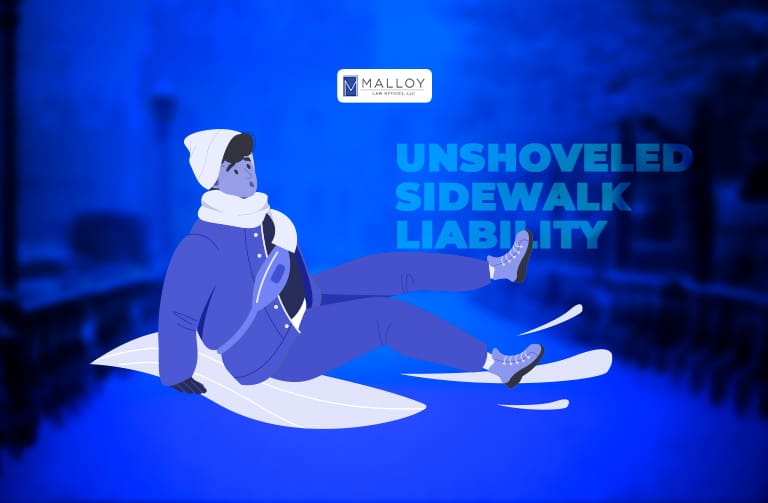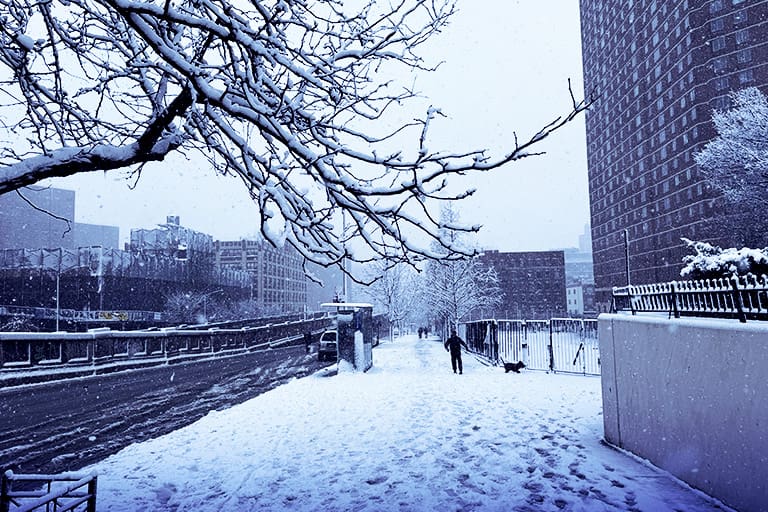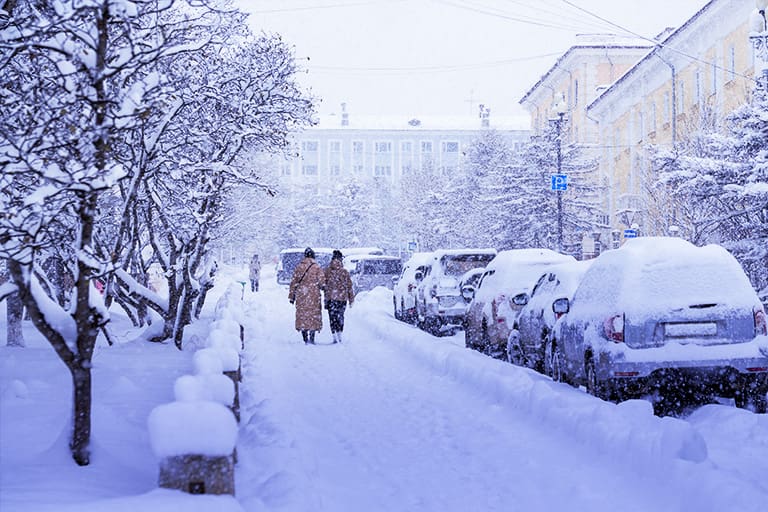Unshoveled Sidewalk Liability and You
As the winter months begin in earnest, sudden and dramatic drops in temperature grow far more common. This can bring unexpected snow, sleet, and freezing rain. Even rainwater left on the ground can frost overnight. When this happens, it’s of the utmost importance for property owners to shovel snow and ice off of sidewalks promptly and to apply salt to prevent refreezing. Failing to do so will only create more work for you later. But of course, this is a best-case scenario. If someone is hurt in a slip and fall on a sidewalk on your property, you may be liable for their medical bills, lost wages, and more! Today’s Malloy Law blog post will investigate the issue of unshoveled sidewalk liability.
Fault in a Sidewalk Slip and Fall
The mere fact of slipping and falling on a stretch of icy sidewalk does not necessarily mean that the unfortunate person in question has a personal injury case. As in any slip and fall case, the injured person needs to prove that their injury originated from someone else’s negligence. For the uninitiated, this can basically be understood as “carelessness,” though the full legal definition is considerably more nuanced than this and subject to constant debate among legal scholars.
In order to prove negligence, the injured person must show:
- There was a dangerous condition on the sidewalk in question.
- The landowner knew or should have known about this dangerous condition.
- The landowner could have fixed it, or informed passers-by of its existence, but did neither.
What About Public Sidewalks?
Unshoveled sidewalk liability is simple enough to understand in the case of walkways which cross onto a given property owner’s land. But what about public sidewalks with no clear responsible party? In these cases, responsibility is often determined by state or municipal law.
For instance, in Baltimore, property owners are responsible for the maintenance of any stretch of sidewalk that binds or abuts their property. This includes shoveling snow and clearing ice, but also extends to necessary repairs. The city has the right to issue a notice requiring the property owner to repair a given stretch of sidewalk. If this notice isn’t honored, the city has the right to make the repairs and bill the owner.
Property owners should seek to inform themselves of the laws pertaining to sidewalk maintenance in their city, county, and state. Failure to do can lead to unforeseen and unfortunate consequences.
Governments and Unshoveled Sidewalk Liability
If you slip and fall on a stretch of sidewalk whose maintenance is solely the responsibility of the government, you should expect certain limits on your ability to seek compensation. These may include:
- Notice and time deadlines for bringing a personal injury claim
- Limits on the amount of compensation you can receive through your personal injury case.
Be sure to do your research thoroughly before pursuing legal action. Failure to do so may see your case voided by the state or municipal bureaucracy before it can even begin in earnest.
Proving Negligence
Hard evidence is paramount to proving any negligence slip and fall case. This is doubly true in any case involving icy, snowy, or otherwise slippery sidewalks. These conditions are by definition temporary and therefore need to be documented before they disappear. Photo evidence of the condition of the area where the slip took place is vital. Pictures of your external injuries and the state of your clothes can also help build your case. A doctor’s report to create a hard record of the injury and its cause is also vital.
It’s generally worthwhile to obtain a record of any complaints about the walkway in question fielded by the property owner (though this may require a lawyer). Once again, to prove negligence it is necessary to support the claim that the party responsible for the maintenance of the area where the injury occurred was aware or should have been aware of the conditions which led to your injury. Quality, quantity, and diversity of evidence can all support this claim.
How Malloy Law Can Help
If you or a loved one suffer an injury due to sidewalks made hazardous by winter weather, Malloy Law can help. Our experienced and talented team of attorneys can boast some of the DMV area’s slip and fall specialists. We’ll assess your case free of charge and plot a strategy to win maximum compensation for your medical bills, lost wages, and pain and suffering. Our dedicated staff is always standing by to take your call. Contact Malloy Law today and let’s win your case.





